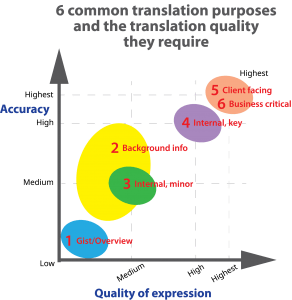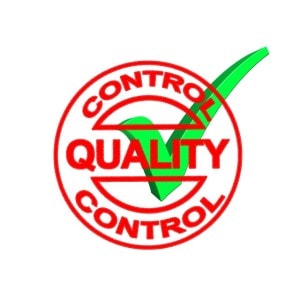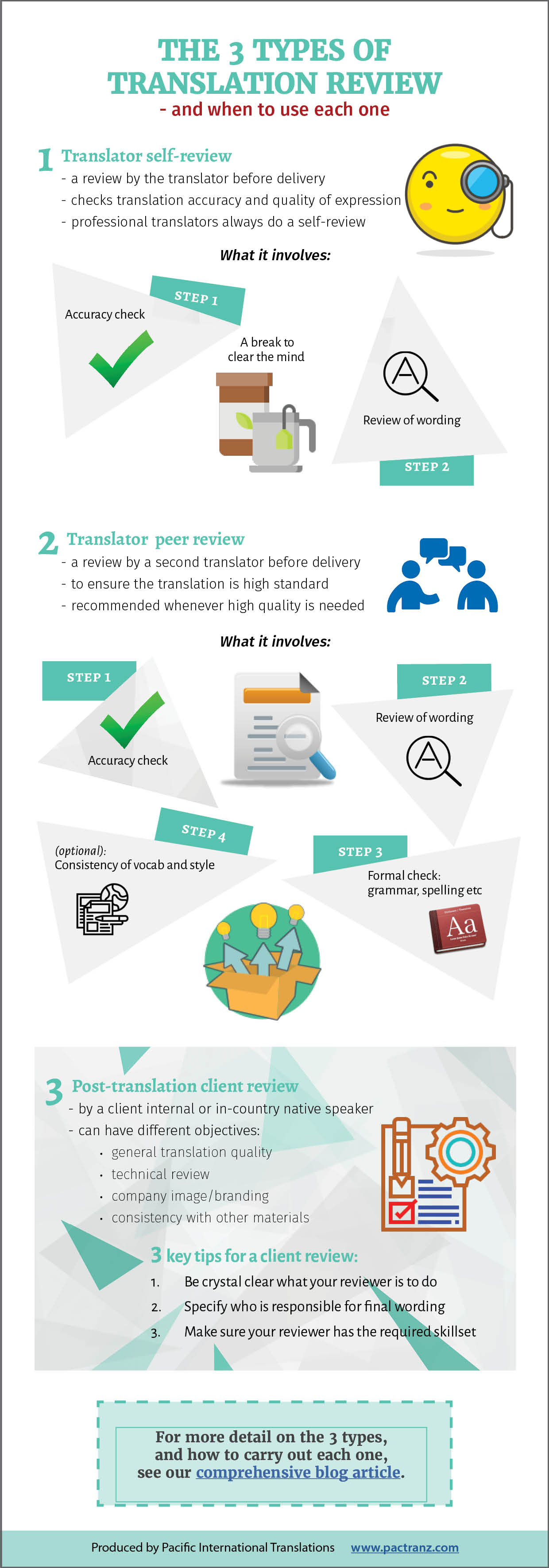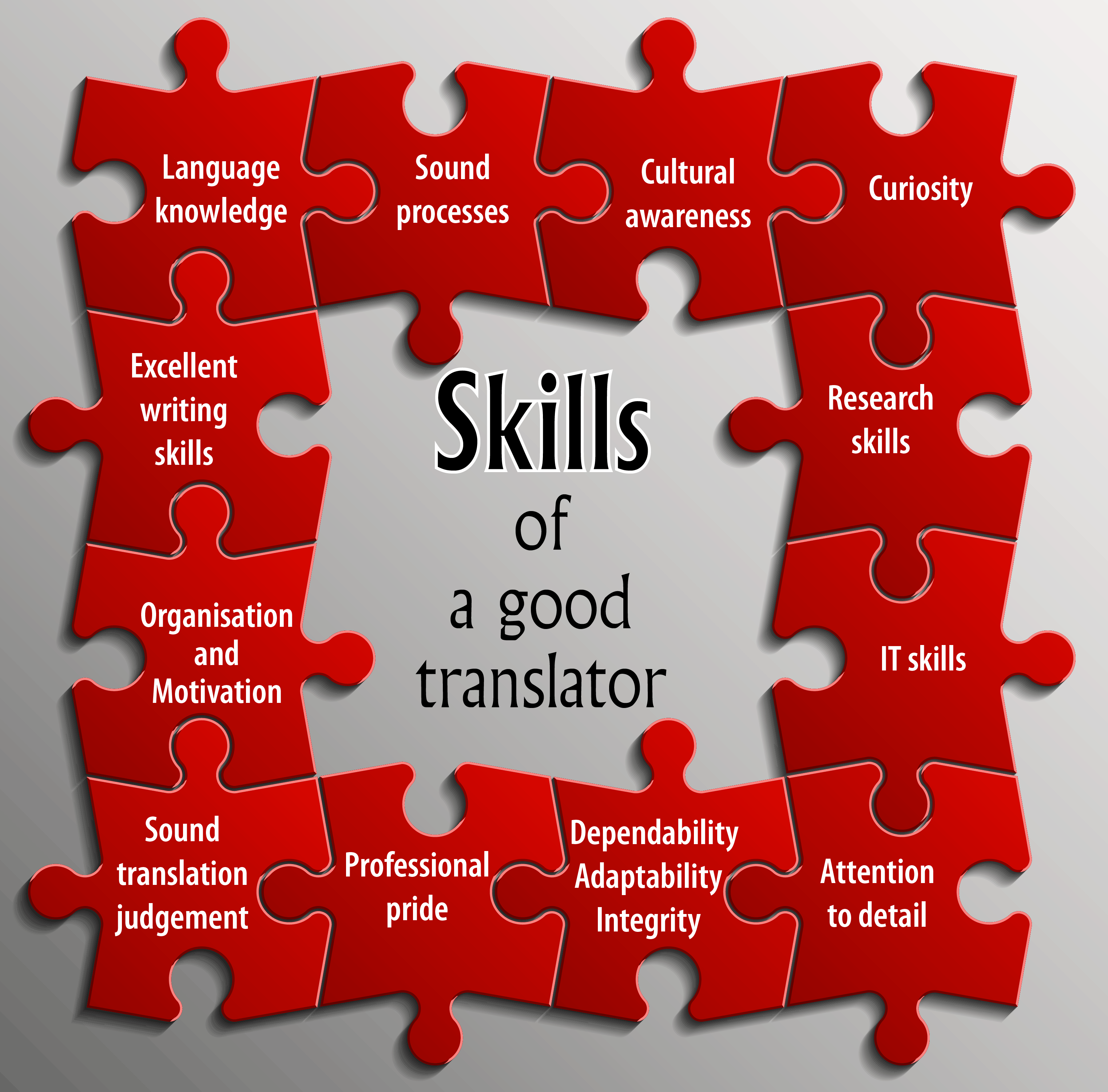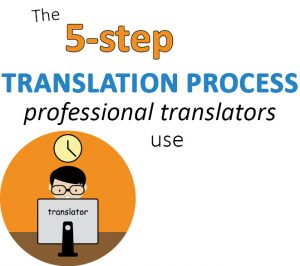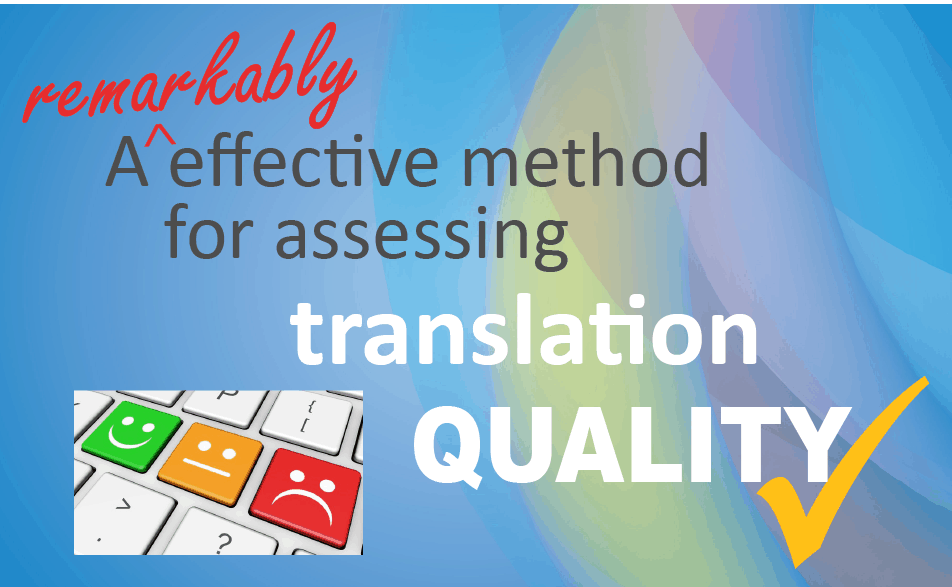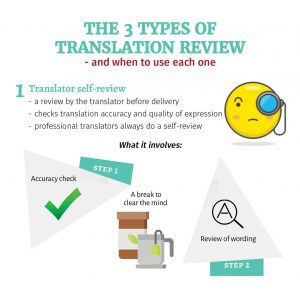
The three types of translation review all have the same purpose:
to ensure your translation is of the quality you need.
So, what are the differences between them and when should you insist on each one?
This article answers those questions and explains exactly how to carry out each type of review.
It’ll arm you with the information you need to always adopt the best review option for your translations – and so get the quality you want.
Review Type 1: Translator self-review
What is it?
A review of the translation by the translator before delivery.
What’s the objective?
To ensure the translation is both accurate and well-worded.
When is a self-review necessary?
Whenever a reasonable degree of translation quality is needed.
Without a self-review, a translation would generally be considered just a draft. It may have inaccuracies (things missed or translated incorrectly) or phrasing that’s a little unnatural.
That’s because translating involves complex mental processing and it’s hard to get everything spot on first time through. The self-review process is needed to overcome those challenges.
Now in some circumstances you might be happy with just a draft translation and no self-review. For example, if you just want to get the gist of what a document says.
But a translator self-review is essential if you don’t want the risk of a translation mistake or some slightly awkward wording. It’s the starting point for your translation risk management, with the second review type (translation peer review) adding an additional level.
You may find our translation purposes article useful here. This chart shows you should insist on a translator self-review for at least 3 of the main purposes for getting a business translation:
How should a translator do a self-review?
In two separate steps with a break in between.
The first step is an accuracy check. The translator systematically works through the translation, phrase-by-phrase or sentence-by-sentence, comparing it with the original text. They make sure no meaning has been missed or misinterpreted.
They should work from hard copies here and not on screen where it’s too easy to miss things.
The translator should now take a break to clear the mind.
Then the second step is to read through the translation and refine wording where needed.
We explain why a self-review requires these separate steps and how it fits into the full translation process in this other article.
Note:
It would be rare for an experienced professional translator not to self-review their work. Self-review forms an integral part of translation training, and they know how essential it is for producing consistent professional quality translations.
If you engage qualified professional translators or a quality-focused translation company, this type of review will be automatically included.
Review Type 2: Translator peer-review
What is it?
A review of the translation by a second translator before delivery.
This is a separate and additional step to the initial translation process – it’s carried out after the initial translator provides their ‘final’ translation.
What’s the objective?
To ensure the translation is high quality, by which we mean:
- fully accurate (all meaning correctly expressed)
- appropriately worded
- no errors
- internally consistent
Now an experienced professional translator using best practice processes (which include a self-review) should produce a high-quality translation.
So why bother with this additional review? For the simple reason that translators are human, and even the best make mistakes occasionally.
So this peer review process is essentially a safety check to confirm there are no errors and to refine wording if needed.
When should you insist on a translator peer review?
Whenever a high degree of translation quality is needed.
Of the 6 main purposes for business translations, this would at least include your client-facing, business-critical and key internal documents.
More generally, it’s whenever any shortcomings in the translation could have negative repercussions for you – particularly financial or reputational impact.
A correctly carried out peer review will markedly reduce the risk of that happening.
How should a second translator do a peer review?
In three, and sometimes four, steps.
Step 1 reviews translation accuracy using the same method as a self-review.
Step 2 reviews quality of expression, again in the same way as a self-review.
Step 3 checks there are no errors – spelling, grammatical, or in numbers and proper names.
Depending on the nature of the text and the reviewer’s experience, a fourth step may be necessary to check for consistency of vocabulary and style.
We explain precisely how to carry out each step, including how to tackle the thorny issues of equivalence of meaning and what is and isn’t good expression, in our comprehensive article on assessing translation quality.
Note:
Translations delivered by quality-focused translation companies should automatically include a second translator review. In our case these are our quality-assured translations.
In contrast, translations supplied by freelance translators are unlikely to have been peer-reviewed.
Some translation companies may also offer an option without a peer review. These are our budget-professional translation option, better suited for your non-essential documents.
Review Type 3: Post-translation client review
What is it?
A review of certain aspects of a completed translation by a client internal or in-country native speaker.
What’s the objective?
There are 6 different possible objectives:
1. Errors – a simple check to confirm there are no spelling or grammatical mistakes.
2. Accuracy – a check that all meaning has been correctly expressed in the translation.
3. Wording – to ensure the translation reads naturally and well.
Note: These three checks will already have been done in a translator peer review process. So, any further client review here would be an additional, second “safety check”.
4. Technical review – to confirm that everything makes sense from a technical point of view and the most appropriate terminology has been used.
5. Branding and style – to ensure that your brand is communicated effectively and in a way you’re happy with.
6. Consistency – that wording and style matches that of your other materials or communications.
When might you want a post-translation review?
A review for errors, accuracy or expression (Objectives 1-3)
When:
- a second translator (peer) review hasn’t been done, or
- you aren’t entirely confident in the peer review, or
- the materials are business-critical, and you consider a further safety check warranted.
Technical review
If:
- the materials are tech-heavy and it’s critical the best terminology is used
- you use company-specific terms or jargon that need to be translated in a certain way
- there are technical aspects that the translators could have misinterpreted and so translated incorrectly or less than ideally (eg steps or processes in instruction manuals or help files).
Branding and style
If it’s important your company or products/services are portrayed in a certain way.
Consistency
When the materials need to match aspects of other materials – layout/formatting, style, wording, etc.
How to carry out each type of client review
Error check: by running a spell/grammar check tool or reading through the translation.
Accuracy: by systematically comparing the meanings of corresponding chunks of text in the translation and source document, as described above.
Wording: by reading through the translation to identify any wording that’s a little unnatural or hard to follow.
Technical review: by:
- reading through the translation checking that everything makes sense, is easy to follow, and uses appropriate vocabulary, or
- having a glossary or list of key terms and systematically checking how these have been handled throughout the translation.
Branding and style: by reading through the translation to see that it has the right tone and will generate the effect you want.
Consistency: by using a checklist or style guide and systematically checking the translation for conformity.
Who should do the review?
Technical review: An ‘attention to detail’ native speaker with expertise in the field or full familiarity with the product/service in the translation language.
If they’re authorised to make changes, your review will also need sufficient knowledge of the source language to ensure the translation doesn’t end up saying something different to the original text.
Branding/style: A native speaker familiar with the tone and effect you want for the materials in that language and market.
Consistency: An ‘attention to detail’ native speaker with good language skills and a clear understanding of your requirements.
Important:
Any reviewer authorised to make changes to your branding message or to ensure consistency must also be a skilled writer (and remember, most people aren’t!) – see below.
Errors: An ‘attention to detail’ native speaker with the necessary language skills.
Translation accuracy: Someone who:
- has advanced language ability in both languages – without this they can misunderstand or miss nuances of meaning, and
- is thorough and pays attention to detail – more the perfectionist, quality-focused personality type rather than broad picture or high output person, and
- understands how it needs to be done to get best results, particularly the need to work from hard copies and with small chunks of text – see here for the best practice in reviewing for translation accuracy.
If they’re authorised to make changes, they’ll also need excellent writing skills – see next section.
Wording/Quality of expression
A native speaker with excellent writing ability in that language and text style.
This is needed to ensure any changes are clearly and naturally worded using appropriate vocabulary.
Don’t just assume someone is a good writer – most people aren’t! To know for sure, you need direct experience of their formal writing skills. Don’t rely on general academic achievement as it isn’t a good indicator.
And don’t even consider someone writing in their second language – they are most unlikely to have the necessary skills.
Beware the over-editing syndrome!
People inexperienced at reviewing translation wording often want to make more changes than is necessary. They can end up changing perfectly good text simply because they would tend to say it differently.
We call these changes personal or stylistic preferences. They can add time and potentially cost to a project. Worse, they may not improve, and can sometimes actually compromise, translation quality.
To avoid this, we recommend stipulating to your reviewers that they can only change text they see as unnatural or unclear and should otherwise respect the translator’s writing style and wording choices.

3 key tips for a successful post-translation client review
1: Be crystal clear what you are asking your reviewer to do
You need to be clear in your own mind what you want your client review to achieve, and thus your reviewer to do (and not do). Then ensure you clearly communicate this.
If you’re ambiguous or unclear in your instructions, your reviewer may well do something you hadn’t intended.
For example, client reviewers can assume the translation has now become their responsibility, and so want to re-word it to their style. This can result in a lot of time and effort spent on edits of questionable value.
2: Spell out who has ultimate responsibility for the translation wording
Is your reviewer free to make any changes they want to the translation? Or will these go back to the translator to either implement or consider?
If your reviewer has carte blanche, bear in mind that nobody will be checking any changes they make are appropriate. You’ll need to be sure they’ll do a professional job.
3: Make sure your reviewer is the right person for the job
Someone who doesn’t have the required skillset or personality may not be as thorough or accurate as you want. They may even make ill-advised changes to the translation.
So it’s essential you choose your reviewer wisely. Our suggestions above on the skills needed for each type of post-translation review will help.
Conclusion
We’ve explained the three types of translation review and what each should achieve.
A translator self-review is integral to best practice translation processes and required to rectify potential wording and accuracy issues remaining after an initial translation. All professional translators should automatically self-review their work.
A second translator peer review adds an extra level of quality control. It requires an unwavering focus across a multi-step process. You should insist on a peer review whenever you need a high-quality translation.
There are several possible forms of post-translation client review. Whether you need one depends on the importance of your materials and the level of confidence you have in your translators and their processes. It’s essential your reviewer has the right skillset and adopts sound methodology.
Download this summary of the 3 types of translation review.
Click to open. Then right click and save, or use the download icon.
Let us quote for your next translation project.
We know our stuff and will deliver you high-quality work!
Just:
– use our translation quote form, or
– e-mail us the details
and we’ll be right back to you.
Jump on our mailing list!
You’ll get proven, highly practical and quick-read tips for achieving better translation results, direct to your inbox.
Great value for just 20 seconds of your time, once a fortnight. Read more here.
Head to our Key articles for clients list on our main blog page. Or start with these 3:
The specialised skills needed for professional translation
The 5 step translation process professional translators use
What we mean by translation quality and a simple method for assessing it

